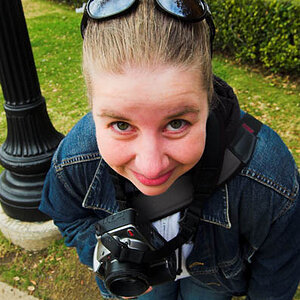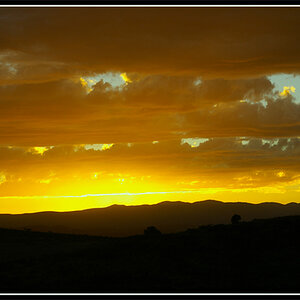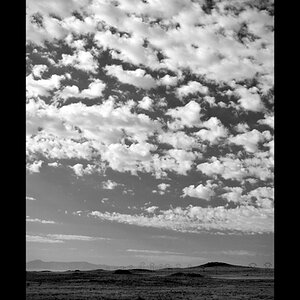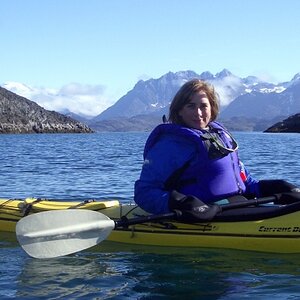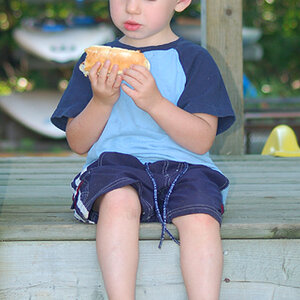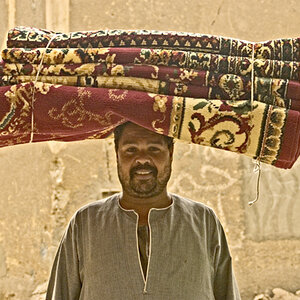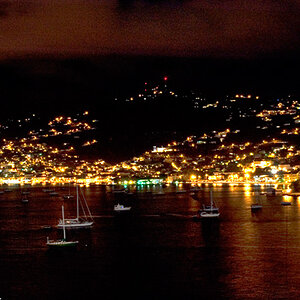Navigation
Install the app
How to install the app on iOS
Follow along with the video below to see how to install our site as a web app on your home screen.

Note: This feature currently requires accessing the site using the built-in Safari browser.
More options
You are using an out of date browser. It may not display this or other websites correctly.
You should upgrade or use an alternative browser.
You should upgrade or use an alternative browser.
What is the best way to achieve bokeh?
- Thread starter Nolan
- Start date
Plato
TPF Noob!
- Joined
- Jul 11, 2009
- Messages
- 1,058
- Reaction score
- 1
- Location
- United States of America
- Website
- web.mac.com
- Can others edit my Photos
- Photos NOT OK to edit
What is the best way to achieve bokeh with a nikon d90 w/ AF-S DX NIKKOR 18-105mm f3.5-5.6 G ED VR? Thanks for the help! This is my first dslr, so i need a hand.
Tough with that lens. Try to focus on something really close with the lens wide open.
Better if you get a large aperture prime, such as 50mm or 85 mm, either f/1.4 or f/1.8.
Derrel
Mr. Rain Cloud
- Joined
- Jul 23, 2009
- Messages
- 48,225
- Reaction score
- 18,941
- Location
- USA
- Website
- www.pbase.com
- Can others edit my Photos
- Photos OK to edit
"Bokeh" is a term that refers to the quality of the out of focus rendition given by different lenses. The term came to the USA through noted photography and darkroom techniques write Mike Johnston, who has a blog called The Online Photographer; Johnston introduced the term to the USA in the 1990's.
A lot of people confuse backgrounds that are out of focus with "bokeh", but that is not what bokeh really is. I think what you are trying to achieve is simply a well-defocused background,with a sharply-rendered foreground subject. If that is the case, what you can do is to use longer focal lengths and wider lens apertures, and place your main subject relatively close to the camera, and make sure that the background is quite far behind the subject; this will give you the most-defocused background you can get with a DX sensor and an 18-135mm kit lens.
A wider-aperture lens would help in getting the background to render more out of focus; at longer distances, like say 45 feet from the camera, with a DX sensor and a 135mm setting at f/5.6, the background will not be what is called "blown out" but would be more what many would describe as "softly out of focus".
There's a young photography enthusiast on here who uses a D90 and the new 50mm f/1.4 AF-S G prime lens....that lens renders backgrounds pretty well out of focus because of the focal length and the really wide aperture, and the relatively close range which it can be used to frame subjects on a DX body.
In terms of lenses that have really good bokeh, Nikon has a few really nice lenses. 85/1.4, 105/2 DC, 135/2 DC, 200f/2 VR, 70-200 VR, and to an extent, the 300/4 AF-S.
A lot of people confuse backgrounds that are out of focus with "bokeh", but that is not what bokeh really is. I think what you are trying to achieve is simply a well-defocused background,with a sharply-rendered foreground subject. If that is the case, what you can do is to use longer focal lengths and wider lens apertures, and place your main subject relatively close to the camera, and make sure that the background is quite far behind the subject; this will give you the most-defocused background you can get with a DX sensor and an 18-135mm kit lens.
A wider-aperture lens would help in getting the background to render more out of focus; at longer distances, like say 45 feet from the camera, with a DX sensor and a 135mm setting at f/5.6, the background will not be what is called "blown out" but would be more what many would describe as "softly out of focus".
There's a young photography enthusiast on here who uses a D90 and the new 50mm f/1.4 AF-S G prime lens....that lens renders backgrounds pretty well out of focus because of the focal length and the really wide aperture, and the relatively close range which it can be used to frame subjects on a DX body.
In terms of lenses that have really good bokeh, Nikon has a few really nice lenses. 85/1.4, 105/2 DC, 135/2 DC, 200f/2 VR, 70-200 VR, and to an extent, the 300/4 AF-S.
Dwig
TPF Noob!
- Joined
- Mar 11, 2009
- Messages
- 1,261
- Reaction score
- 1
- Location
- Key West FL
- Website
- happythursday.com
- Can others edit my Photos
- Photos NOT OK to edit
What is the best way to achieve bokeh with a nikon d90 w/ AF-S DX NIKKOR 18-105mm f3.5-5.6 G ED VR? ...
To start off with, you are using the term "bokeh" incorrectly as Derrel correctly points out. You are, I assume, meaning "shallow depth of field".
You aren't going to be able to achieve much in the way of shallow DOF with a small format (APS-c or DX) camera and a slow lens like the 18-105. You'll only be able to achieve it, at least to any significant degree, in rather closeup work.
What's important is the relation ship between the subject distance and the background distance. When shooting close, its possible to have the background 20x to 50x the subject distance. In these cases, subject 2 feet away and nearest background object is 40-100ft away, you might be successful. Still, your only hope will be to shoot wide open.
If you are really serious about getting significantly shallow DOF on a DX format body you need to be looking into getting a lens thats f/2.0 or faster. Even f/2.8 lenses won't achieve the effect except when their focal length is over 200-300mm.
DScience
No longer a newbie, moving up!
- Joined
- Apr 12, 2009
- Messages
- 1,513
- Reaction score
- 122
- Location
- Denver, CO
- Can others edit my Photos
- Photos NOT OK to edit
"Bokeh" is a term that refers to the quality of the out of focus rendition given by different lenses. The term came to the USA through noted photography and darkroom techniques write Mike Johnston, who has a blog called The Online Photographer; Johnston introduced the term to the USA in the 1990's.
A lot of people confuse backgrounds that are out of focus with "bokeh", but that is not what bokeh really is. I think what you are trying to achieve is simply a well-defocused background,with a sharply-rendered foreground subject. If that is the case, what you can do is to use longer focal lengths and wider lens apertures, and place your main subject relatively close to the camera, and make sure that the background is quite far behind the subject; this will give you the most-defocused background you can get with a DX sensor and an 18-135mm kit lens.
A wider-aperture lens would help in getting the background to render more out of focus; at longer distances, like say 45 feet from the camera, with a DX sensor and a 135mm setting at f/5.6, the background will not be what is called "blown out" but would be more what many would describe as "softly out of focus".
There's a young photography enthusiast on here who uses a D90 and the new 50mm f/1.4 AF-S G prime lens....that lens renders backgrounds pretty well out of focus because of the focal length and the really wide aperture, and the relatively close range which it can be used to frame subjects on a DX body.
In terms of lenses that have really good bokeh, Nikon has a few really nice lenses. 85/1.4, 105/2 DC, 135/2 DC, 200f/2 VR, 70-200 VR, and to an extent, the 300/4 AF-S.
I think it's worth mentioning that the word bokeh comes from a Japanese noun meaning "blur" or "haze".
Bokeh in my opinion has become a tool that one can utilize most efficiently with certain types of lenses. I like to think of it as 'light painting', because the way some lenses produce bokeh makes it seem as though the light is melting into a artistic blend of soft colors and tones.
Anyway to answer the OP's question, it's very hard to produce decent bokeh with that lens; I've tried several times with very little success. If you wanna mess around with this concept without blowing lots of cash, get the 50mm f1.8. It will give you way better results than the kit lens you have.
- Joined
- Apr 9, 2009
- Messages
- 41,401
- Reaction score
- 5,706
- Location
- Iowa
- Website
- kharrodphotography.blogspot.com
- Can others edit my Photos
- Photos OK to edit
The quality of the Bokeh a lens produces is almost entirely governed by the shape and number of aperture blades.
A lens having 5 blades will not produce boken as smooth as a lens with 9 aperture blades. The other blade property that counts is the shape of the blade edges, sharp or rounded.
A lens having 5 blades will not produce boken as smooth as a lens with 9 aperture blades. The other blade property that counts is the shape of the blade edges, sharp or rounded.
DScience
No longer a newbie, moving up!
- Joined
- Apr 12, 2009
- Messages
- 1,513
- Reaction score
- 122
- Location
- Denver, CO
- Can others edit my Photos
- Photos NOT OK to edit
The quality of the Bokeh a lens produces is almost entirely governed by the shape and number of aperture blades.
A lens having 5 blades will not produce boken as smooth as a lens with 9 aperture blades. The other blade property that counts is the shape of the blade edges, sharp or rounded.
True, the quality is governed by these factors. However without a wide open aperture, the DOF will simply be too large to render any bokeh, whether it be good or bad.
Samanax
TPF Noob!
- Joined
- Jan 1, 2009
- Messages
- 2,562
- Reaction score
- 0
- Location
- Kaneohe, Oahu
- Can others edit my Photos
- Photos OK to edit
Depth Of Field TutorialWhat is the best way to achieve bokeh with a nikon d90 w/ AF-S DX NIKKOR 18-105mm f3.5-5.6 G ED VR? Thanks for the help! This is my first dslr, so i need a hand.
Examples For Understanding Depth Of Field
Zoom your lens all the way out, open up the aperture, get close to your subject and make sure the subject is not right up against the background (the further the better).
Derrel
Mr. Rain Cloud
- Joined
- Jul 23, 2009
- Messages
- 48,225
- Reaction score
- 18,941
- Location
- USA
- Website
- www.pbase.com
- Can others edit my Photos
- Photos OK to edit
Bokeh
Shows how field curvature and astigmatism can drastically change the shape of the blur across the frame.
Shows the dreaded double-line effect on nisen-bokeh, which is a problem the Canon 85mm f/1.2L suffers from, especially when pressed into service as a close-range lens for things like shallow depth of field flower photographs.
Lenses that have the best bokeh tend to have undercorrected spherical aberration, which gives a nice background bokeh and a harsh foreground bokeh. This is one reason two of the world's best bokeh lenses are the Nikkor 105 and 135mm AF-D Defocus Control lenses, where the user can control front and rear defocus with numbered settings, increasing or decreasing the degree of undercorrected spherical aberration. When a lens has over-corrected spherical aberration, it makes the images appear very sharp, almost biting--a good example if the little Nikkor 28-200 G series lens--bitingly sharp, but harsh bokeh.
Bokeh
Good article. Short.
Nikon | Imaging Products | NIKKOR - The Thousand and One Nights, Tale 32 : Ai AF DC Nikkor 135 mm f/2S
Nikon lens designer talking about the 135mm f/2 AF-D Defocus Control lens and how undercorrected spherical aberration leads to an almost idea out of focus blurring in the background areas.
Minolta has made both a 100mm and an 85mm Varisoft lens with adjustable spherical aberration
Minolta 85/2.8 Varisoft
and a 135mm lens called the 135 STF or 135mm Smooth Transition Focus lens,which Sony re-introduced in 2006 in the Alpha Mount. The following web site devoted to the 135 STF will explain a lot of things about bokeh to those who wish to learn more abut it. Minolta developed a truly unique technology called apodisation for the STF lens--no other lens uses this technology.
The 135 STF
which is a lens that is famous for superb bokeh
Shows how field curvature and astigmatism can drastically change the shape of the blur across the frame.
Shows the dreaded double-line effect on nisen-bokeh, which is a problem the Canon 85mm f/1.2L suffers from, especially when pressed into service as a close-range lens for things like shallow depth of field flower photographs.
Lenses that have the best bokeh tend to have undercorrected spherical aberration, which gives a nice background bokeh and a harsh foreground bokeh. This is one reason two of the world's best bokeh lenses are the Nikkor 105 and 135mm AF-D Defocus Control lenses, where the user can control front and rear defocus with numbered settings, increasing or decreasing the degree of undercorrected spherical aberration. When a lens has over-corrected spherical aberration, it makes the images appear very sharp, almost biting--a good example if the little Nikkor 28-200 G series lens--bitingly sharp, but harsh bokeh.
Bokeh
Good article. Short.
Nikon | Imaging Products | NIKKOR - The Thousand and One Nights, Tale 32 : Ai AF DC Nikkor 135 mm f/2S
Nikon lens designer talking about the 135mm f/2 AF-D Defocus Control lens and how undercorrected spherical aberration leads to an almost idea out of focus blurring in the background areas.
Minolta has made both a 100mm and an 85mm Varisoft lens with adjustable spherical aberration
Minolta 85/2.8 Varisoft
and a 135mm lens called the 135 STF or 135mm Smooth Transition Focus lens,which Sony re-introduced in 2006 in the Alpha Mount. The following web site devoted to the 135 STF will explain a lot of things about bokeh to those who wish to learn more abut it. Minolta developed a truly unique technology called apodisation for the STF lens--no other lens uses this technology.
The 135 STF
which is a lens that is famous for superb bokeh
- Joined
- Apr 9, 2009
- Messages
- 41,401
- Reaction score
- 5,706
- Location
- Iowa
- Website
- kharrodphotography.blogspot.com
- Can others edit my Photos
- Photos OK to edit
You don't need a wide open aperature to produce Bokeh.True, the quality is governed by these factors. However without a wide open aperture, the DOF will simply be too large to render any bokeh, whether it be good or bad.
I can still produce Bokeh with a 500 mm lens at f/8. My DOF will be exactly the same (0.07 ft front and back) with my subject at 20 feet, as a subject at 4 feet using a 50mm @ f/1.8. Both will also have the same Circle of Confusion of .02 mm.
The deciding factor is the distance from the subject to the background.
Plato
TPF Noob!
- Joined
- Jul 11, 2009
- Messages
- 1,058
- Reaction score
- 1
- Location
- United States of America
- Website
- web.mac.com
- Can others edit my Photos
- Photos NOT OK to edit
You don't need a wide open aperature to produce Bokeh.True, the quality is governed by these factors. However without a wide open aperture, the DOF will simply be too large to render any bokeh, whether it be good or bad.
I can still produce Bokeh with a 500 mm lens at f/8. My DOF will be exactly the same (0.07 ft front and back) with my subject at 20 feet, as a subject at 4 feet using a 50mm @ f/1.8. Both will also have the same Circle of Confusion of .02 mm.
The deciding factor is the distance from the subject to the background.
That's convenient if you want a portrait of someone's nose!

kundalini
Been spending a lot of time on here!
- Joined
- Jul 18, 2007
- Messages
- 13,607
- Reaction score
- 1,937
- Location
- State of Confusion
- Can others edit my Photos
- Photos NOT OK to edit
I was bored this past winter and did this comparison of bokeh at 200mm & 300mm for S&Gs.I can still produce Bokeh with a 500 mm lens at f/8.
Derrel
Mr. Rain Cloud
- Joined
- Jul 23, 2009
- Messages
- 48,225
- Reaction score
- 18,941
- Location
- USA
- Website
- www.pbase.com
- Can others edit my Photos
- Photos OK to edit
I think some folks are still thinking about bokeh as a quantitative thing, like how many feet are within the depth of field band, but bokeh is more about the "quality" or "character" of the out of focus rendering.
Manual Focus Forum / Lens design aside, bokeh quality hinges mostly on speed, IMO
This page has a lot of discussion and examples of bokeh and how it can be good, or bad, and shows some very specific examples.
On page 2, one poster,robertro, in reply #37, describes his feelings about bokeh this way: "What impacts bokeh? I tried to rank them in order of importantce...any opinions welcomed to enhance this understanding!

[The user has direct control over these first two.]
1) relative subject and background distances:
2) aperture: fast aperture certainly can help bokeh

[The lens has intrinsic qualities.]
3) optical design lens angle of view:
4) optical design: under/over-correction of spherical aberration (which affects how "busy" the bokeh is and can cause the dreaded "nisen bokeh")
5) optical design: use of aspherical elements (suspected of causing the "onion" effect in OOF highlights)
6) aperture design: number and shape of aperture blades (only determines the shape of OOF highlights, which is merely one aspect of bokeh quality)"
If anybody wants to see a really EXCELLENT set of sample images demonstrating bokeh differences between lenses, with explanations, Rick Denny's page here Bokeh Test is excellent. Better than most other example pages. It features nine sample lenses, including the Canon 135mm f/2.8 Soft Focus, the Canon 70-200mm f/4 L, and the Nikon 75-150mm f/3.5 Series E.
Mr. Denny looks at edge effects, whether the lens produces the less-desirable double-lining (what the Japanese call nisen-bokeh), what the aperture shape looks like on bright, out of focus highlights, and the overall effect or impression is of the lens's bokeh.
Manual Focus Forum / Lens design aside, bokeh quality hinges mostly on speed, IMO
This page has a lot of discussion and examples of bokeh and how it can be good, or bad, and shows some very specific examples.
On page 2, one poster,robertro, in reply #37, describes his feelings about bokeh this way: "What impacts bokeh? I tried to rank them in order of importantce...any opinions welcomed to enhance this understanding!

[The user has direct control over these first two.]
1) relative subject and background distances:
2) aperture: fast aperture certainly can help bokeh

[The lens has intrinsic qualities.]
3) optical design lens angle of view:
4) optical design: under/over-correction of spherical aberration (which affects how "busy" the bokeh is and can cause the dreaded "nisen bokeh")
5) optical design: use of aspherical elements (suspected of causing the "onion" effect in OOF highlights)
6) aperture design: number and shape of aperture blades (only determines the shape of OOF highlights, which is merely one aspect of bokeh quality)"
If anybody wants to see a really EXCELLENT set of sample images demonstrating bokeh differences between lenses, with explanations, Rick Denny's page here Bokeh Test is excellent. Better than most other example pages. It features nine sample lenses, including the Canon 135mm f/2.8 Soft Focus, the Canon 70-200mm f/4 L, and the Nikon 75-150mm f/3.5 Series E.
Mr. Denny looks at edge effects, whether the lens produces the less-desirable double-lining (what the Japanese call nisen-bokeh), what the aperture shape looks like on bright, out of focus highlights, and the overall effect or impression is of the lens's bokeh.
- Joined
- Apr 9, 2009
- Messages
- 41,401
- Reaction score
- 5,706
- Location
- Iowa
- Website
- kharrodphotography.blogspot.com
- Can others edit my Photos
- Photos OK to edit
That's convenient if you want a portrait of someone's nose!

 The same nose I shot with the 50mm at 4 feet. Of course.
The same nose I shot with the 50mm at 4 feet. Of course. 
Think I'm going to make a whole series out of noses too. :thumbup:
Plato
TPF Noob!
- Joined
- Jul 11, 2009
- Messages
- 1,058
- Reaction score
- 1
- Location
- United States of America
- Website
- web.mac.com
- Can others edit my Photos
- Photos NOT OK to edit
That's convenient if you want a portrait of someone's nose!

The same nose I shot with the 50mm at 4 feet. Of course.
Think I'm going to make a whole series out of noses too. :thumbup:
Puts a new meaning to the WWII term "nose art."
Similar threads
- Replies
- 20
- Views
- 2K
- Replies
- 13
- Views
- 307

